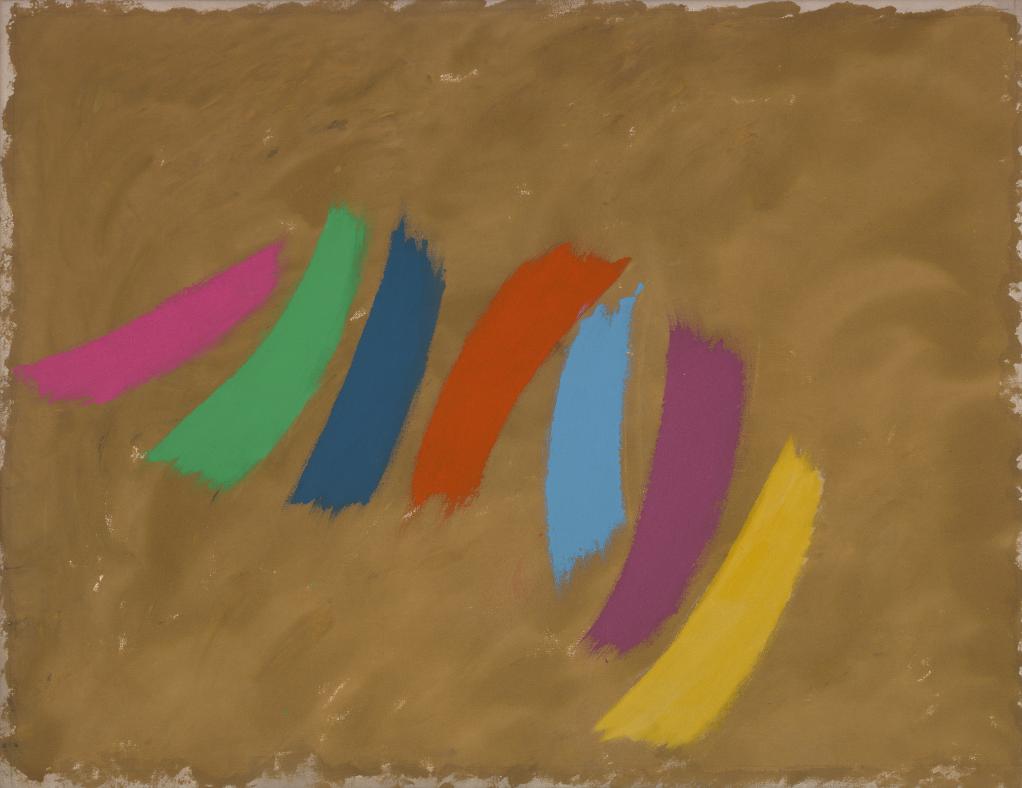Jack Bush
"I don't look for anything. It comes to me. I may be walking along a road and I see a mark on the road; it looks interesting, so I try it out as a painting. Or looking at some flowers in the garden - how can I get the feel of those colours, of the flower colours, the nice smell and everything? ... I'm not painting flowers. I'm painting the essence, the feeling to me only, not how somebody else feels about those flowers, only me. Then I forget the flowers and make a good painting of it if I can."
Jack Bush is best known for his abstract paintings done between the 1950s and 1970s. He represented Canada at the 1967 São Paulo Bienal and the Art Gallery of Ontario toured a large retrospective exhibition of his work in 1976. Bush created advertisements and illustrations for 42 years before devoting himself full-time to painting in 1968.
As a young man in Toronto in the 1930s, Bush ran a commercial art business and took night classes at the Ontario College of Art. During this period he had very little exposure to modern European art, and, like most other Toronto painters at the time, was primarily influenced by the Group of Seven. The decorative designs and areas of flat colour of Toronto-based artist and designer Charles Comfort also influenced Bush's early painting. After seeing abstract art in Toronto and New York Bush began to experiment with abstraction himself in the early 1950s
Bush was a member of the Toronto artist group Painters Eleven who banded together in 1954 to promote abstract painting. Through this involvement he met the influential New York City art critic Clement Greenberg. Bush was encouraged by Greenberg to abandon his Abstract Expressionist style characterized by hovering amorphous shapes on the picture plane. He would simplify his composition by using an all-over coverage of thinly applied bright colours inspired by his watercolour sketches. His work is based on an abstract record of his perceptions. He did not expect the viewer to see the flower or hear the music that inspired his work, but only to share in the feeling through his painting.
Summer, No. 3 (1956) is an example of Bush's early abstract work. He claimed that he wanted to paint like the American painters, but by his own admission, was never able to imitate their style. In hindsight, he said , "The difference was 'Bush,' and I just couldn't get rid of it ... fortunately."
Big A (1968), an acrylic on canvas painting consists of a dominant vertical red stripe flanked by two contrasting blocks of colour. These three sections rest on four horizontal stripes. Bush has applied the colours so thinly that the texture of the canvas is visible through the pigment. The borders between the colours follow straight lines but are softened by the imperfections in Bush's application. Colours overlap each other and sometimes do not meet, exposing minute amounts of canvas. At this point in his career, Bush had reduced his painting to a flat surface of vibrant, what has been called, "joyous" colour. Later, in the 1970s, he would return to paintings that had a background and a foreground, but were still intensely colourful.

Are you considering selling your historical works?
We offer a viable and safe alternative to auction houses, eliminating the risk of devaluation when a work publicly fails to sell. We have no hidden fees and our transactions are dealt with the utmost discretion.
